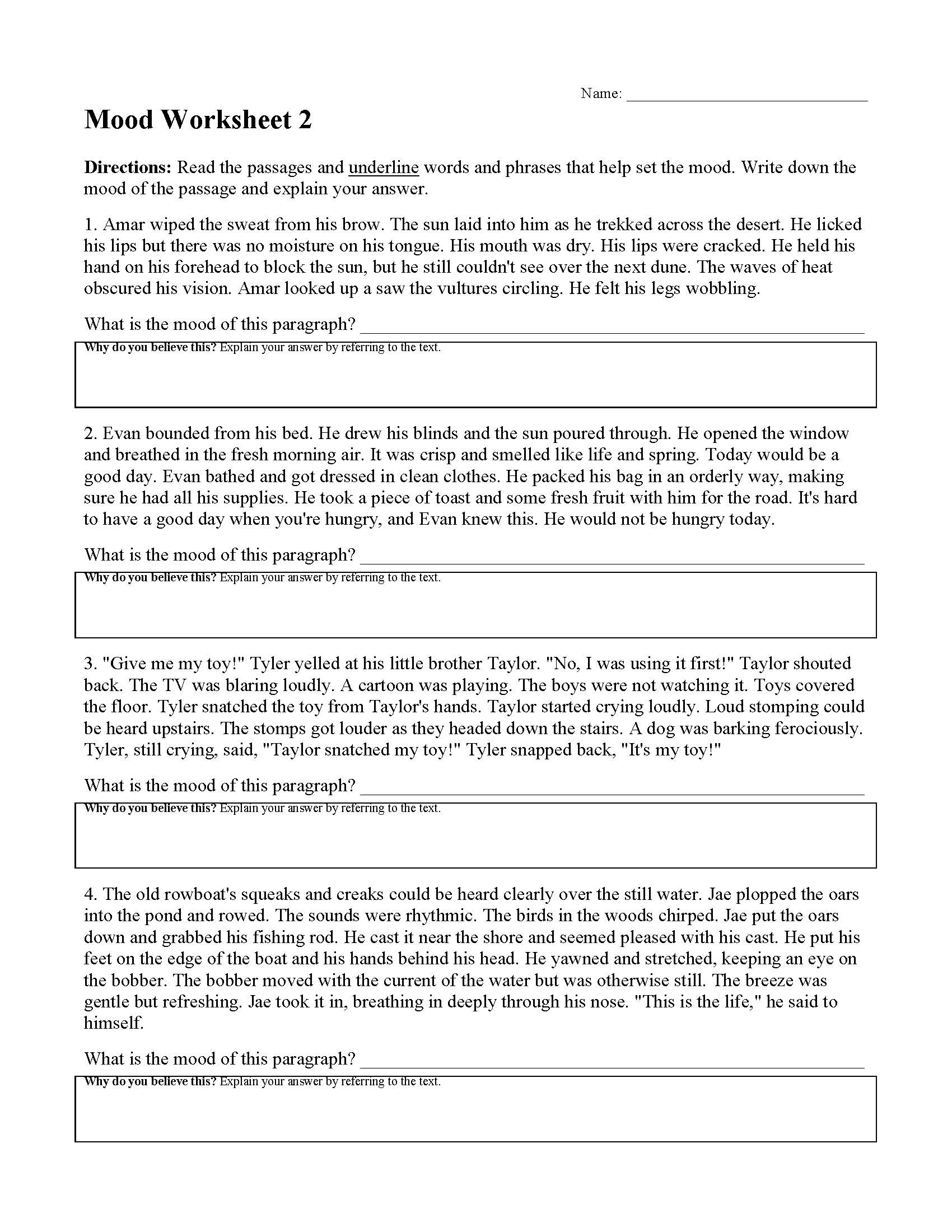Popular Content
Want Email Updates?
Get emails about new stuff.
Be the first to know.
Looking for Something?
Mood Worksheet 2
Here is another double-sided mood worksheet. Students read another nine passages. Again, each passage expresses a distinct mood that students will attempt to interpret and describe. Students will underline words and phrases from each passage that help establish the mood. This will help them be more considerate and thoughtful in their interpretations. Then they will explain their answers.
Readability Score for Mood Worksheet 2
Click to VIEW ALL Readability Scores for This Text
SMOG Index
6.9
Average Grade Level
4.7
Based on the readability scores for this text, Mood Worksheet 2 is recommended for students reading at grade levels 3 - 7. This text should be accessible to any student reading at a 3rd grade reading level or higher.
3rd Grade
← ★ →
7th Grade
Complex
Simple
Mood
Common Core State Standards
Mood Anchor Standard
R.1 - Read closely to determine what the text says explicitly and to make logical inferences from it; cite specific textual evidence when writing or speaking to support conclusions drawn from the text.RL.K.1 - With prompting and support, ask and answer questions about key details in a text.
RL.1.1 - Ask and answer questions about key details in a text.
RL.2.1 - Ask and answer such questions as who, what, where, when, why, and how to demonstrate understanding of key details in a text.
RL.3.1 - Ask and answer questions to demonstrate understanding of a text, referring explicitly to the text as the basis for the answers.
RL.4.1 - Refer to details and examples in a text when explaining what the text says explicitly and when drawing inferences from the text.
RL.5.1 - Quote accurately from a text when explaining what the text says explicitly and when drawing inferences from the text.
RL.6.1 - Cite textual evidence to support analysis of what the text says explicitly as well as inferences drawn from the text.
RL.7.1 - Cite several pieces of textual evidence to support analysis of what the text says explicitly as well as inferences drawn from the text.
RL.8.1 - Cite the textual evidence that most strongly supports an analysis of what the text says explicitly as well as inferences drawn from the text.
RL.9-10.1 - Cite strong and thorough textual evidence to support analysis of what the text says explicitly as well as inferences drawn from the text.
RL.11-12.1 - Cite strong and thorough textual evidence to support analysis of what the text says explicitly as well as inferences drawn from the text, including determining where the text leaves matters uncertain.
Click to VIEW Grade Level Standards for R.1
Looking for More Mood Worksheets?
Here are all of our Mood Worksheets
Looking for Something Else?
Search This Site
Subscribe Now
Get emails about new stuff.
Don't worry. I hate spam too.
Some Other Useful Pages
- Author's Purpose Worksheets
- Characterization Worksheets
- Conflict Worksheets
- Fact and Opinion Worksheets
- Figurative Language Activities
- Figurative Language Poems with Questions
- Genre Activities
- Irony Worksheets
- Making Predictions
- Mood Worksheets
- Nonfiction Passages and Functional Texts
- Parts of Speech Worksheets
- Poetic Devices
- Point of View Worksheets
- School Project Ideas
- Setting Worksheets
- Simile and Metaphor Worksheets
- Story Structure Worksheets
- Text Structure Worksheets
- Theme Worksheets
- Tone Worksheets
- ALL PAGES AND WORKSHEETS
Search This Site







